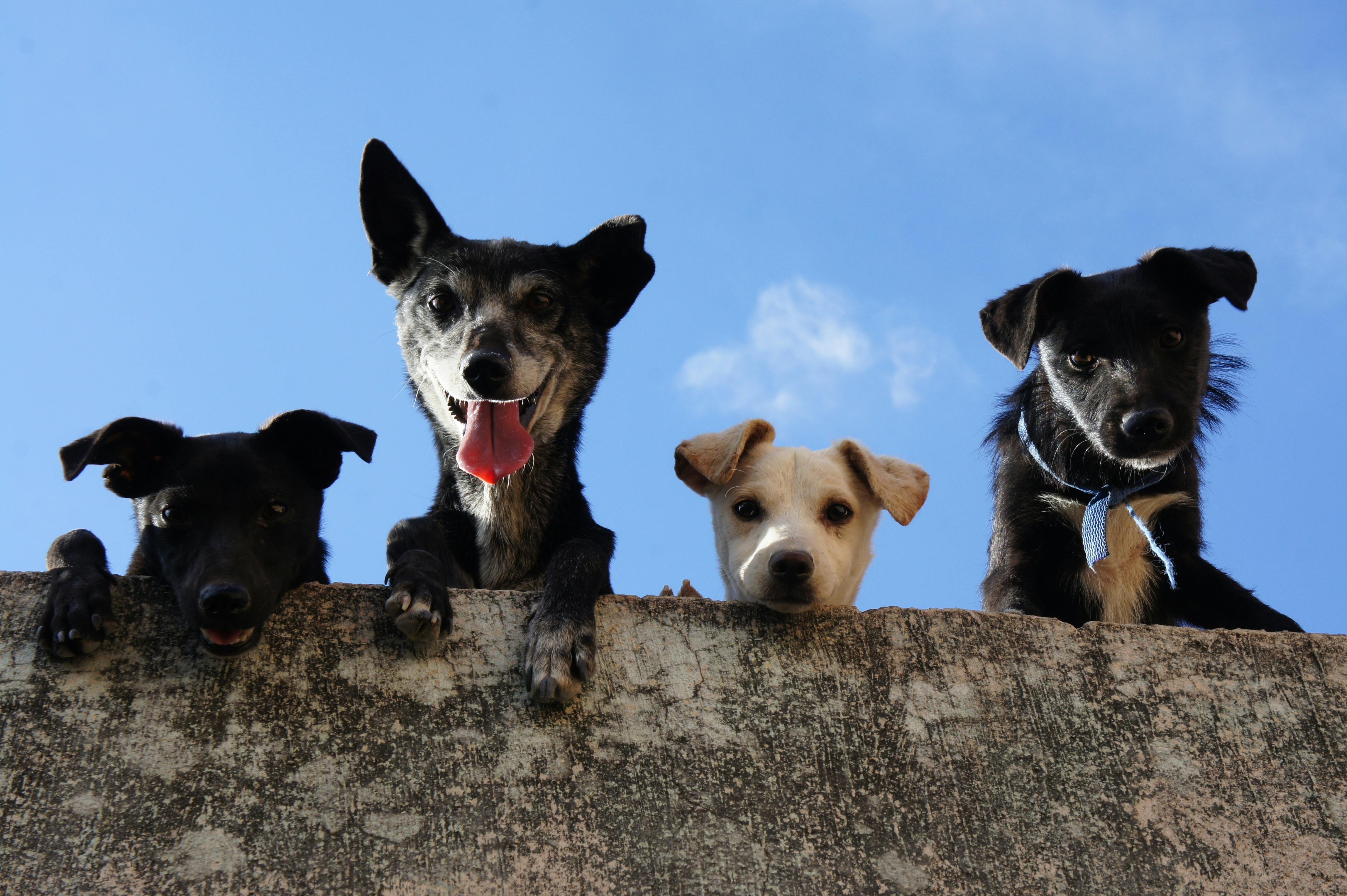Dealing with Aggression in Dogs: Safe Handling and Training
Dog aggression is one of the most serious and challenging behavioral issues dog owners face. Whether your dog shows aggression toward people, other dogs, or specific situations, understanding aggressive dog training methods and implementing appropriate dog aggression solutions is essential for everyone's safety. Aggressive dog behavior doesn't emerge without reason—it stems from fear, frustration, territorial instincts, or past trauma. This comprehensive guide explores the causes of aggression, safe handling aggressive dog techniques, and evidence-based strategies for addressing dog aggression while prioritizing safety for both humans and animals.
Understanding Aggressive Dog Behavior
Before implementing any aggressive dog training strategies, understanding what constitutes aggression and its underlying causes is crucial.
What Is Dog Aggression?
Dog aggression encompasses behaviors including growling, snarling, lunging, snapping, and biting directed toward people, other animals, or objects. Aggression exists on a spectrum from mild threats to severe attacks. All aggression serves a purpose from the dog's perspective—communication, self-defense, or resource protection.
Types of Dog Aggression
Fear-based aggression: The most common type, where dogs act aggressively when frightened or cornered. This is defensive aggression aimed at creating distance from perceived threats.
Territorial aggression: Dogs protecting their perceived territory—home, yard, or car—from intruders. This behavior intensifies when strangers approach the dog's space.
Protective aggression: Also called "resource guarding," this involves protecting food, toys, spaces, or people. Dogs may growl or snap when someone approaches valued items.
Redirected aggression: When dogs can't reach the target of their aggression, they redirect it toward whatever is nearest—often their owner or another pet.
Pain-induced aggression: Dogs in pain may bite when touched in painful areas. This is a normal defensive response to physical discomfort.
Predatory aggression: Instinctive hunting behavior directed at moving objects, small animals, or sometimes children. This is silent aggression without warning signals.
Social aggression: Conflict over social status within multi-dog households or during dog-to-dog interactions.

Understanding aggressive dog behavior helps identify triggers and implement appropriate solutions
Recognizing Warning Signs of Aggression
Early recognition of aggressive dog behavior allows intervention before escalation.
Body Language Signals
- Stiff, rigid posture: Tensed muscles indicate high arousal and potential aggression
- Hard stare: Intense, unblinking eye contact focused on a target
- Raised hackles: Hair standing up along the spine signals heightened arousal
- Whale eye: Showing whites of eyes indicates stress and potential aggression
- Lip curling: Exposing teeth as a warning signal
- Growling or snarling: Audible warnings that should never be ignored
- Lunging or snapping: Direct aggressive actions
- Freezing: Complete stillness before potential attack
Situational Triggers
Identify specific situations triggering aggression:
- Approaching the food bowl during meals
- Strangers entering the home
- Other dogs on walks
- Children running or screaming
- Being cornered or restrained
- Touching specific body parts
- Loud noises or sudden movements
Causes and Contributing Factors
Understanding why aggressive dog behavior develops guides appropriate intervention.
Genetic Predisposition
Some breeds have genetic tendencies toward specific types of aggression due to selective breeding for protection, guarding, or hunting. However, genetics alone don't determine behavior—environment and training significantly influence outcomes.
Poor Socialization
Dogs inadequately socialized during critical developmental periods (3-14 weeks) often develop fear-based aggression toward unfamiliar people, animals, or situations. Lack of positive exposure creates anxiety and defensive behaviors.
Trauma and Abuse
Dogs with histories of abuse, neglect, or traumatic experiences frequently develop aggression as a defense mechanism. Past negative experiences shape future responses to similar situations.
Medical Issues
Pain from arthritis, injuries, dental problems, or neurological conditions can trigger aggression. Sudden onset aggression in previously non-aggressive dogs often indicates medical problems requiring veterinary evaluation.
Fear and Anxiety
Chronically anxious or fearful dogs may resort to aggression when escape isn't possible. Fear aggression represents desperate attempts to create safety through intimidation.
Lack of Training and Structure
Dogs without clear boundaries, consistent rules, or appropriate training may develop aggression to control their environment. Structure and guidance reduce anxiety and aggressive responses.

Professional training provides structure and builds confidence in aggressive dogs
Safe Handling Aggressive Dog: Essential Precautions
Safety must always be the priority when handling aggressive dog situations.
Immediate Safety Measures
Never punish aggressive behavior: Punishment escalates aggression and damages trust. It doesn't teach appropriate behavior and increases fear.
Avoid triggers when possible: Manage your dog's environment to minimize exposure to known triggers while working on behavior modification.
Use proper equipment: Secure leashes, properly fitted harnesses, and when necessary under professional guidance, basket muzzles ensure safety during training.
Create physical barriers: Baby gates, closed doors, and crates prevent access to triggering situations and create safe spaces.
Supervise interactions: Never leave aggressive dogs unsupervised with children, other pets, or vulnerable individuals.
When to Use Muzzles
Basket muzzles allow dogs to pant, drink, and receive treats while preventing biting. Proper muzzle training involves gradual conditioning with positive associations. Muzzles are safety tools, not punishment devices, and should only be used under professional guidance as part of comprehensive behavior modification.
Managing Multi-Dog Households
For dog-to-dog aggression within homes, separate dogs during unsupervised times, feed separately, and provide individual resources. Reintroduce controlled, positive interactions only under professional supervision.
Aggressive Dog Training: Evidence-Based Approaches
Effective aggressive dog training combines behavior modification, environmental management, and often professional support.
Counterconditioning and Desensitization
This gold-standard approach gradually changes your dog's emotional response to triggers. Present triggers at low intensities below your dog's reaction threshold while pairing them with positive experiences (treats, play). Gradually increase intensity as your dog's comfort improves.
Example: If your dog reacts to other dogs at 20 feet, practice at 30 feet with high-value treats until your dog remains calm, then slowly decrease distance over weeks.
Positive Reinforcement Training
Reward desired behaviors heavily while ignoring or redirecting unwanted behaviors. Build alternative behaviors incompatible with aggression:
- Teach "look at me" to redirect attention from triggers
- Train solid "sit" and "down" commands
- Practice impulse control exercises
- Reward calm behavior consistently
Establishing Clear Boundaries
Provide consistent rules and predictable routines. Dogs with clear expectations experience less anxiety and confusion, reducing aggressive responses.
Building Confidence Through Training
Many aggressive dogs lack confidence. Regular training sessions teaching new skills build confidence and strengthen your bond, reducing defensive aggression.
Dog Aggression Solutions: Specific Strategies
Tailoring dog aggression solutions to specific aggression types increases effectiveness.
Addressing Fear-Based Aggression
Never force fearful dogs into frightening situations. Create positive associations with triggers gradually. Build confidence through successful experiences. Provide escape routes and safe spaces.
Managing Resource Guarding
Teach "trade" behavior where dogs exchange guarded items for high-value treats. Never approach food bowls during meals. Feed in separate areas. Gradually build tolerance through systematic desensitization.
Reducing Territorial Aggression
Manage arrivals by securing dogs before guests enter. Teach "place" command for calm settling. Gradually desensitize to doorbell and visitor arrivals. Reward calm behavior during triggering situations.
Addressing Dog-to-Dog Aggression
Practice controlled exposures at safe distances. Reward attention to you rather than other dogs. Avoid dog parks until behavior improves significantly. Consider parallel walking with neutral dogs under professional supervision.
When Professional Help Is Essential
Addressing dog aggression often requires professional expertise. Seek help from certified veterinary behaviorists or professional trainers specializing in aggression when:
- Your dog has bitten or attempted to bite
- Aggression is escalating or intensifying
- Multiple types of aggression are present
- Children or vulnerable individuals are at risk
- You feel fearful or unable to manage the situation
- Home management attempts haven't improved behavior
- Medical causes have been ruled out but aggression persists
Choosing Qualified Professionals
Look for:
- Veterinary behaviorists (board-certified specialists)
- Certified Professional Dog Trainers (CPDT-KA)
- Certified Applied Animal Behaviorists (CAAB)
- Trainers using positive reinforcement exclusively
- Professionals with aggression-specific experience
Avoid trainers recommending punishment, dominance-based methods, or harsh corrections—these worsen aggression.
Medication and Behavior Modification
For severe aggressive dog behavior, veterinary behaviorists may prescribe anti-anxiety medications. Medication doesn't cure aggression but can reduce anxiety enough for training to be effective. Combined approaches (medication + behavior modification) often yield the best results.
Common Medications
Veterinarians may prescribe SSRIs, anti-anxiety medications, or other pharmaceuticals based on individual assessment. Never medicate without professional veterinary guidance.
Living With an Aggressive Dog: Long-Term Management
Many aggressive dogs can improve significantly, but some require lifelong management.
Realistic Expectations
Set achievable goals. Complete elimination of aggression may not be possible, but substantial improvement often is. Focus on management, reduced intensity, and increased predictability.
Ongoing Safety Protocols
Maintain consistent management strategies even after improvement. Continue supervised interactions, environmental management, and training throughout your dog's life.
Quality of Life Considerations
Evaluate whether your dog's quality of life is acceptable. Chronic anxiety, constant management, and inability to engage in normal activities may indicate the need for difficult decisions. Consult with your veterinarian and behaviorist about all options.
Conclusion: Commitment to Safety and Progress
Aggressive dog training requires patience, consistency, professional support, and unwavering commitment to safety. While challenging, many dogs with aggressive dog behavior can improve substantially when appropriate dog aggression solutions are implemented systematically.
Understanding that aggression serves a function for your dog—communication, self-protection, or resource defense—helps you approach the problem with empathy while maintaining necessary boundaries. Safe handling aggressive dog situations always prioritizes prevention, environmental management, and gradual behavior modification over punishment or confrontation.
Remember that addressing dog aggression is rarely a quick fix. Most dogs require weeks or months of consistent work to show significant improvement. Some need lifelong management. Professional guidance from veterinary behaviorists or certified trainers specializing in aggression is invaluable and often essential.
If you're living with an aggressive dog, know that help is available. You don't have to navigate this alone. Reach out to qualified professionals who can assess your specific situation, develop customized behavior modification plans, and support you through the process. With dedication, appropriate interventions, and realistic expectations, many aggressive dogs can live safer, calmer lives.
Related Articles
For more information on dog behavior and training, explore these related topics:
- Common Puppy Behavior Issues and How to Fix Them
- Socializing Your Puppy: Why and How to Do It Right
- Separation Anxiety in Dogs: Practical Tips to Help
- Why Dogs Bark Excessively: Causes and Solutions
- Positive Reinforcement Dog Training: Building Great Habits
- Understanding and Managing Dog Behavior Problems







No comments:
Post a Comment